The agricultural sector in the Russian Federation since the 2000s is one of the most successfully and actively developing sectors of the domestic economy. Despite the myths that are quite widespread in society, agriculture in Russia is not only extremely cost-effective and profitable, but it is also able to almost fully ensure the country's food security. In addition, it allows you to export significant volumes of agricultural products abroad. What kind types of production in agriculture known today? What are they and how are they different? You can find answers to these and other equally interesting questions in the process of familiarization with the materials of this article.
General Provisions
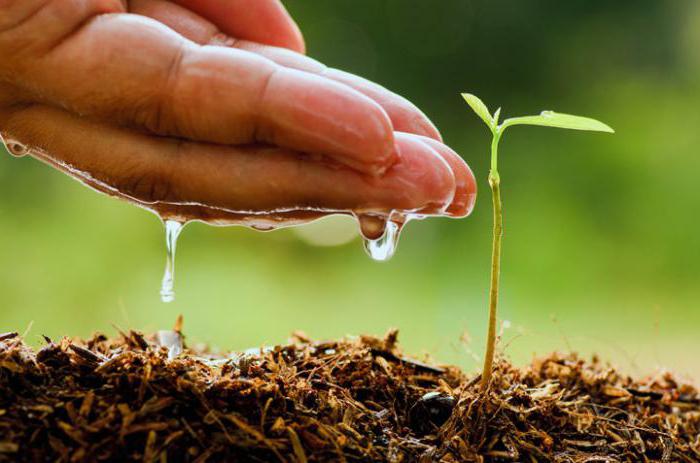
To begin with, it should be noted that the share of all types of agriculture in aggregate, in the GDP of the Russian Federation for 2009 was 4.7%. The gross value added in the agricultural sector, forestry, as well as in hunting for this date amounted to 1.53 trillion rubles. It is important to add that the share of people employed in this area accounted for ten percent.
According to the results of 2015, all types of agriculture in the aggregate, they determined the leading position in accordance with the growth of production, because it increased by 3.5%, which is certainly a positive trend. It is interesting to note that a similar situation became relevant in 2016.
You need to know that the volume of imports of food commodity products in the Russian Federation for the period of the food embargo in 2014-2016. received a three-fold decrease (from 60 to 20 billion dollars). It should be added that over the course of ten years, the country increased the export share of the agricultural type product by six times (namely, from three billion dollars in 2005 to twenty billion dollars in 2015).
According to the results of the reporting year, the harvest of legumes and grain crops equaled 119.1 million tons. This indicator is 13.7% higher than in 2015 (104.8 million tons). In 2016, the Russian Federation took the first position in terms of wheat exports (from 01.07.2015 to 06.30.2016, exports amounted to 24.025 million tons). In addition, in comparison with Soviet times, the quality of all types of agricultural products, and also significantly reduced its losses during storage, transportation and direct sale. Thus, today the agricultural industry in Russia continues to develop dynamically.
Economic inefficiency? It is a myth!
It is important to know that the absolute myth is the assertion that due to the rather cold climatic conditions in the Russian Federation, it is simply impossible to form efficient agriculture. By the way, the basis for the spread of such myths about the notorious inefficiency of various agricultural activities it would be appropriate to take the absolute failure of the corresponding production in the 1990s. Nevertheless, in the early 2000s, agricultural loans were arranged in the agricultural sector, and an absolute order was established in accordance with all aspects of the activity. At the moment, Russian agriculture is one of the rapidly growing branches of the economy.
Plant growing
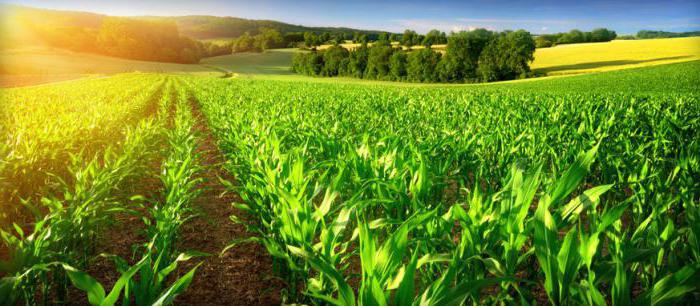
Among the main agricultural activities plant growing occupies a special place. It is important to note that Russia is a huge country, which is located in different climatic zones.In its southern regions, the climate for the development of the agricultural industry is considered very favorable. Tea is grown in Sochi, grapes are grown in the North Caucasus, in the Crimea, and even in Altai, where wine is also made. In the south, such type of agriculture, as crop production, is considered extremely profitable business. For example, the profitability of grain production in the Kuban is one hundred percent. Although the continental climate with hot summers and cold winters is relevant in a significant part of the southern part of the Russian Federation. Naturally, these circumstances somewhat interfere with high yields.
You need to know that in the south of Siberia and in the European part of Russia, the main part of the most fertile soil type is concentrated - chernozem, where such type of agriculture like plant growing, to conduct is more than favorable. However, where the soil is less fertile, it can be developed even for growing crops for fodder purposes or grazing animals.
It is important to note that in terms of the area of land used for agriculture, Russia is practically in first place in the world, and with a fairly low population density, the qualitative characteristics of the soil are somehow compensated by the quantitative. By the way, the bulk of the land that has not been used in the agricultural industry is covered in forests. Timber processing, timber export, as well as the pulp and paper industry are in a prominent position in the economy of the Russian Federation.
Livestock
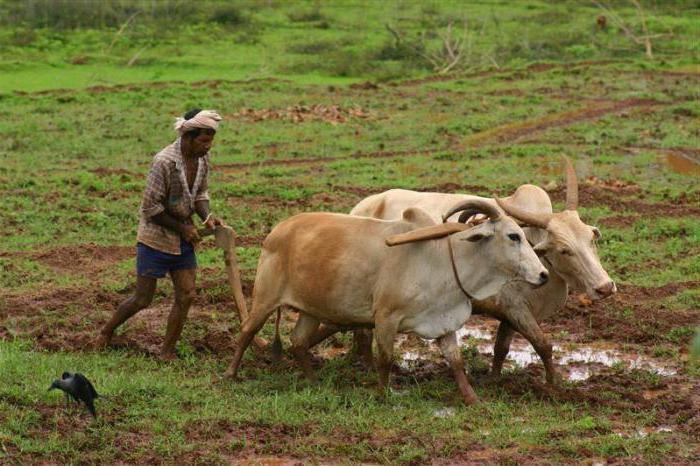
In addition to crop production, livestock farming is one of the elements of Russia's agricultural industry. In the northern part of the country, various types of agricultural enterprises. This fact can be confirmed by the experience of Canada, Sweden and Finland, whose agricultural industry operates, as a rule, in the same conditions as in the central, northern part of Russia.
It is important to note that the key to exceptional success is agricultural specialization of regional importance. If in the southern part of the country it is profitable to promote grain production (corn and wheat), then in the northern part animal husbandry is better developed. In addition, in the second case, it is appropriate to plant heat-loving varieties of cultivated plants, including barley, rye, flax, oats and potatoes.
Modern technologies such types of agricultural sectors, like poultry and livestock, can significantly smooth out the impact on the production processes of the climatic factor - if only there would be food for poultry and animals. It is necessary to add that in the conditions of modern crop production, the crop is in very serious dependence on the availability of fertilizers of artificial origin. However, the Russian Federation is one of the largest manufacturers of this product.
Exclusive agricultural products
The climatic conditions of the Russian Federation contribute to the promotion of a number of types of agricultural organizations exclusive character. Among them, it is important to highlight the collection of natural berries, mushrooms and herbs, as well as beekeeping. By the way, Russia is in first place in the world in terms of production of raspberries and currants. In addition, it is one of the largest producers of honey. Today, the Russian Federation is known all over the world because of the widespread production of caviar (this also includes exports). The seas, lakes and rivers of the country (in particular, the Far East) contain significant stocks of fish. It is necessary to add that in Russia there is a unique fish, for example, Baikal omul.
In the northern part of the Russian Federation, such type of economic activity of agriculture, like reindeer herding. It's no secret that deer meat is a delicacy.Recently, some efforts have been made by the society in order to establish the regularity of its supplies directly from West Siberian reindeer husbandry. It is interesting to note that other Russian delicacies include the following items:
- Seafood: Murmansk scallop, Baltic sea urchins, Black Sea oyster, Magadan trumpeter, as well as ropileme jellyfish.
- Fish: hamsa (Black Sea anchovy), St. Petersburg Karushka, Arkhangelsk toothfish.
- Vegetable products: honeysuckle berries, spruce cones, external cabbage leaves, birch bast, and fern.
- Mushrooms, for example, black Russian truffle.
- Meat: meat of the Tuvan yak, Yakut horse meat, meat of the Dagestan tour.
- Dairy products: moose milk, yak milk, deer milk.
Grain farming
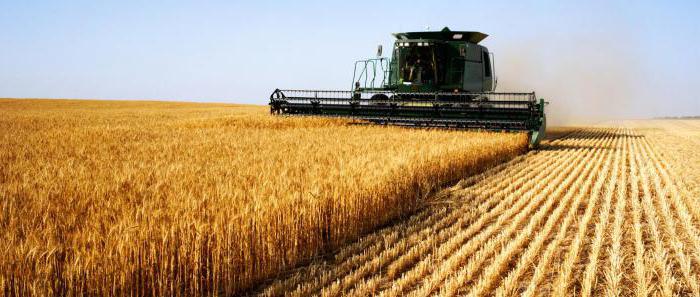
In this chapter, it would be appropriate to consider such type of agriculture in Russia, like grain growing. It is important to know that in the country is ten percent of all arable land in the world. In addition, more than 4/5 of the immediate arable land is in the North Caucasus, Western Siberia, the Urals and the Central Volga region. The Russian Federation ranks first in the world in the production of oats, rye, buckwheat, barley, sunflower and sugar beets. As of 2013, she was in fourth place in the world (after the United States, India and China) in harvesting wheat. It should be added that in 2016, in the Russian Federation, by the beginning of the first month of autumn, the amount of wheat collected was more than 66.8 tons (the total yield can be estimated at 71 million tons).
What else can be said about the presented type of work in agriculture? In 2014, agricultural workers in the country harvested a record crop of grain crops since 1990 - more than 110 million tons (before immediate completion). It should be added that in 2015 in the Russian Federation, the gross harvest of legumes and grain crops (in accordance with preliminary data) amounted to 104.3 million tons of grain after refinement, subject to yield, which is defined as 23.6 centners per hectare. It is important to note that most of all wheat was harvested, namely 61.8 million tons.
According to the results of 2016, the harvest of legumes and grain crops equaled 119.1 million tons. You should be aware that the presented indicator is 13.7% higher than in 2015 (104.8 million tons). By the way, for the first time in the history of the development in the Russian Federation of such type of agricultural industryAs grain growing, 73.3 million tons of wheat were harvested. This result is certainly positive and gives some hope for the future.
Potato farming
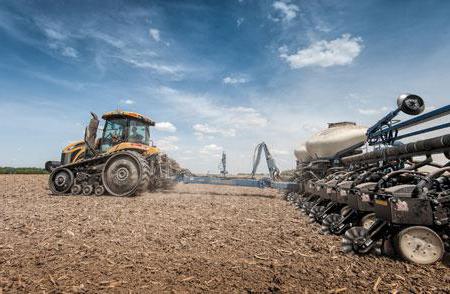
Among the main types of agricultural productsproduced in Russia includes potatoes. It is important to know that its harvest in 2015 amounted to 33.6 million tons. This indicator is 15.9% higher than the average over the past five years. By the way, in 2014, representatives of the agricultural industry collected 31.5 million tons of the crop in question. In 2012, this figure was at the line of 29.5 million tons.
From the above statistics, we can conclude that in recent years, potato production has been growing quite productively. However, in comparison with the 2000s, crop yields remain not very high. For example, in 2006, agricultural workers harvested 38.5 tons of potatoes. However, even with actual indicators of the level of productivity, Russia has risen third in the world in potato harvesting (after India and China). By the way, another potato power (Belarus) in 2012 harvested 6.9 million tons of culture.
It is important to note that over the past ten years, overall potato consumption in the Russian Federation has declined significantly. Why? The fact is that higher incomes of the population prompt to purchase expensive products compared to potatoes.
Beet farming
In number main types of agriculture The Russian Federation also includes beet farming. It is important to note that in 2011 the country collected about 46.2 million tons of beets. The Russian Federation managed to reach the first position in the world respect in accordance with this indicator. In 2015, agricultural workers harvested about 37.6 million tons of sugar beets. This amount is enough to produce more than five million tons of sugar.
What else can be said about the presented agricultural resources? As of 2013, beet growing in the Russian Federation allowed 75-80 percent to cover the whole country’s need for sugar (the rest is mostly sweeteners of alternative value, among which are both natural and chemical, both Russian and imported).
It is important to note that according to the results of 2016, Russia took the first position in the world respect in the production of such a crop as sugar beets. She overtook Germany, France and the United States in this indicator. In addition, in 2016, the Russian Federation produced one million tons of sugar more than is needed for export purposes.
Vegetable growing
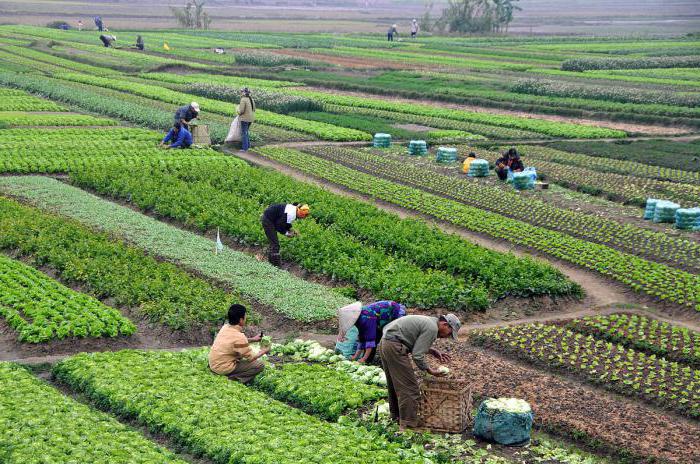
TO main types of agriculture The Russian Federation would be appropriate to include vegetable growing. It is important to note that the production of greenhouse vegetables in 2016 in the country grew by eight percent (up to 691 thousand tons). During the annual period, about 160 hectares of winter greenhouses were commissioned. According to the results of last year, the current level of self-sufficiency in terms of vegetables equaled 90%.
You need to know that in 2015 the gross harvest of greenhouse vegetables in the country amounted to 470.9 thousand tons. For 2016, this indicator equated to 568.8 thousand tons (which is 29% higher than the same last year). The total yield in terms of vegetable crops for 2015 amounted to 16.1 million tons. And in 2014, the Russian Federation produced about 15.45 million tons of vegetables. It is important to know that the indicators presented are the most significant in the history of the country.
It is interesting to note that successes in the case under consideration became possible due to the construction of a large number of large-scale greenhouse complexes, which began to be practiced only recently. They are built both in the north and in the south of the country. By the way, often presented facilities allow you to get the product all year round.
Additional types of agriculture
What types of agriculture are still known in Russia? To begin with, melon breeding can be noted. By the way, the corresponding gross yield in 2014, in accordance with available estimates, exceeded 1.5 million tons. It must be added that up to seventy percent of the total crop falls on watermelons.
As for fruit growing, the most popular fruits that are grown in the Russian Federation are pears, apples, apricots (exclusively for the southern regions) and plums. In addition, Russia is considered a berry power, which determines the effective development of berry growing. However, this is not surprising, because it was said above that there are a large number of forests in the country, which means that there are much more opportunities for picking berries and mushrooms. The country takes the first position in the production of raspberries and currants, and the sixth in the production of strawberries. In addition, Russia was among the three world leaders in terms of the production of gooseberries and strawberries.
In addition to the agricultural sectors presented above, it is necessary to pay attention to winemaking and viticulture, which applies mainly to the North Caucasus and Crimea, as well as to the Volgograd, Astrakhan and Saratov regions. It is important to note that the most widespread not only in the territory of the country in question, but also abroad received such products as “Soviet champagne” and mAssandrian wines.
Tea growing is developing quite rapidly in Russia. It should be noted that the cultivation of tea in the country is concentrated mainly in the Krasnodar Territory. By the way, Russia is one of the most tea-drinking countries in the world. It takes, in accordance with the consumption of the presented product, the fourth place after Turkey, China and India. In addition, the Russian Federation is the largest importer of tea products in the world: more than 160 thousand tons of tea are imported annually.
One cannot but recall cotton growing, because it is closely connected with other rapidly developing branches of agriculture at the state level. In 2016, agricultural workers collected and sent for processing the initial ultrafine cotton crop in the history of Russia. The experiment was carried out in the Volgograd region.
It is important to note that the presented variety of cotton is adapted to the climate conditions of the Lower Volga. Thus, with the successful implementation of the program, the Volgograd Region will be included in the number of the northernmost cotton-growing points in the world. One way or another, this factor will allow promptly promoting import substitution in the textile industry.

In conclusion, it would be advisable to imagine the industry next to crop production, in accordance with its scale - this is livestock farming. You can talk a lot about this topic. It is important to note that the main business is divided into several subgroups, among which the following points should be mentioned:
- Beef cattle breeding (which is developed to a greater extent compared with other presented elements of the livestock system).
- Pig breeding.
- Poultry farming.
- Dairy farming.
- Livestock meat and wool value.
- Reindeer husbandry (which occupies the smallest share in the system under consideration).
It should be noted that all the industries represented occupy approximately the same shares in the livestock system and play an important role in the development of the Russian economy as a whole.